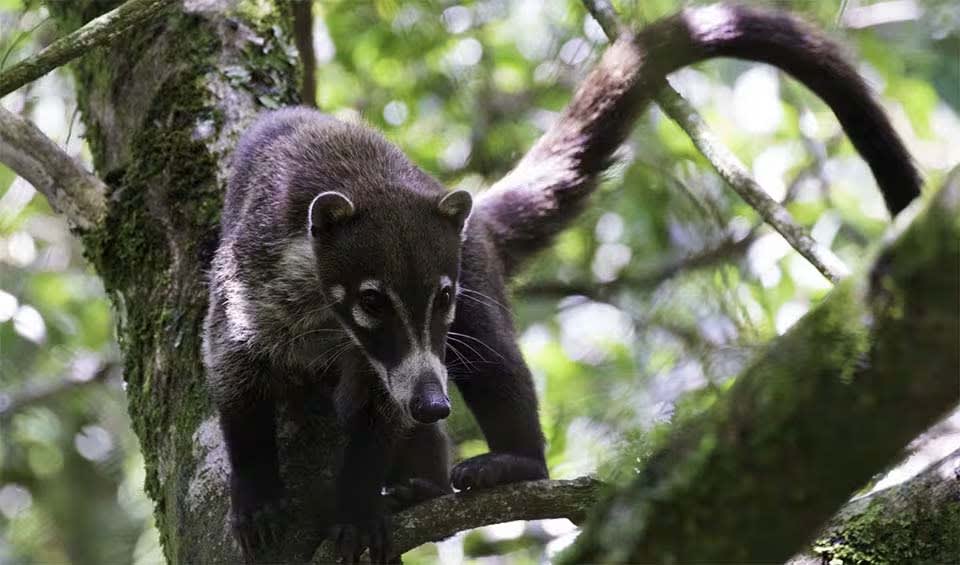Sporting a coat that ranges from black to reddish-brown, with lighter shade underparts, these creatures are easily recognizable by their distinctive facial markings. The face of a white-nosed coati features gray and black patterns, accented with white spots below and above each eye, around the muzzle, and on each cheek, giving them a unique and expressive appearance.
One of the most notable features of the white-nosed coati is its long, flexible snout, equipped with a myriad of muscles that provide an exceptional degree of movement. This anatomical adaptation allows coatis to probe into crevices and under rocks in search of food, demonstrating their resourcefulness and adaptability as foragers. Their diet is impressively diverse, including grubs, ants, beetles, spiders, scorpions, and a variety of fruits, with a particular fondness for prickly pear.
Contrary to most members of the raccoon family, which are nocturnal, white-nosed coatis are primarily diurnal, meaning they are active during the day. This adaptation to daytime activity allows them to exploit different ecological niches from their nocturnal relatives and avoid certain predators. At night, they retreat to the safety of the treetops, where they sleep nestled among the branches and leaves, further showcasing their adept climbing abilities.
Social behavior is another aspect where white-nosed coatis stand out. They form groups called bands, which can consist of dozens of individuals, primarily females and their offspring. These social structures are matriarchal, with females leading the group and engaging in cooperative behaviors such as foraging and looking out for predators. Males, on the other hand, are typically solitary or form small groups and only join the female bands during the mating season.
Distribution
 Belize
Belize Colombia
Colombia Costa Rica
Costa Rica El Salvador
El Salvador Guatemala
Guatemala Honduras
Honduras Mexico
Mexico Nicaragua
Nicaragua Panama
Panama United States
United StatesAnything we've missed?
Help us improve this page by suggesting edits. Glory never dies!
Suggest an editGet to know me
Terrestrial / Aquatic
Altricial / Precocial
Polygamous / Monogamous
Dimorphic (size) / Monomorphic
Active: Diurnal / Nocturnal
Social behavior: Solitary / Pack / Herd / Group
Diet: Carnivore / Herbivore / Omnivore / Piscivorous / Insectivore
Migratory: Yes / No
Domesticated: Yes / No
Dangerous: Yes / No






